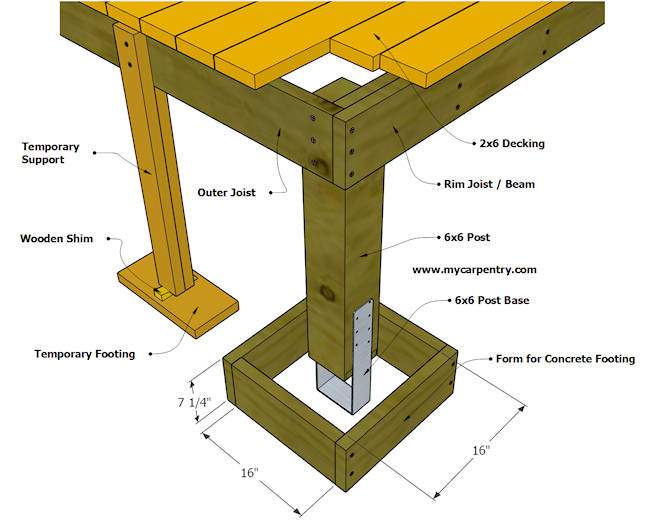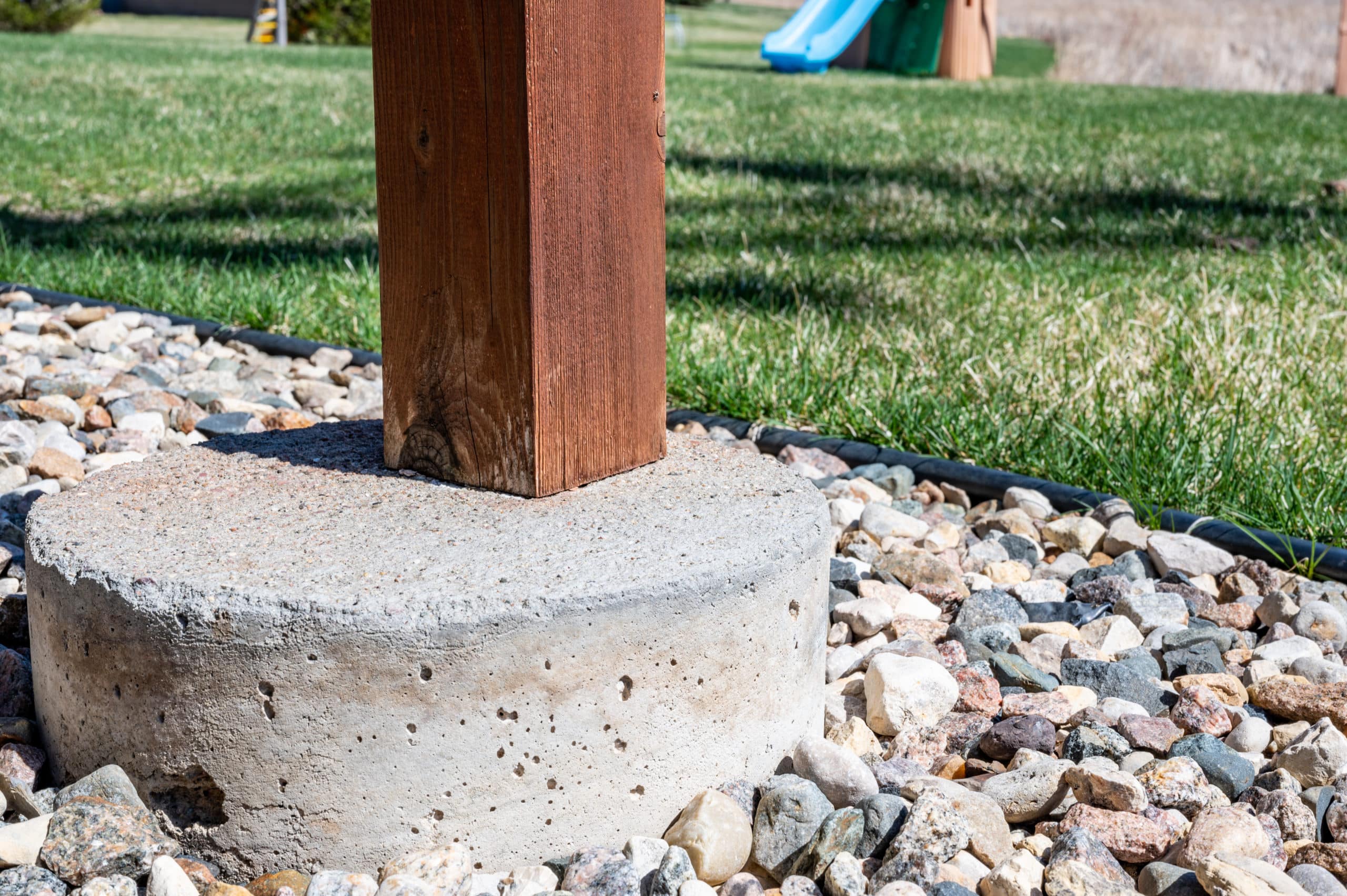The Importance of Proper Deck Footings: A Step-by-Step Setup Tutorial
Wiki Article
Building a Strong Foundation: Revealing the Keys of Deck Ground
When it concerns building a deck, one essential facet that commonly goes forgotten is the structure or footing. A solid and properly designed deck ground is vital for the security and durability of any deck framework. In this interesting overview, entitled "Structure a Strong Structure: Introducing the Secrets of Deck Footing," we will certainly explore the relevance of proper footings, the various types readily available, and the elements to take into consideration when picking the best ones for your deck job. We will supply step-by-step guidelines on how to prepare and set up grounds properly. Finally, we will certainly review the value of routine upkeep and evaluation to guarantee the ongoing security and toughness of your deck grounds. Join us as we discover the keys to developing a reliable deck foundation.Value of Appropriate Grounds

One of the primary reasons that correct grounds are essential is to avoid the deck from sinking or moving. Grounds that are not deep adequate or are badly created can cause the deck to clear up unevenly or shift in time. This can cause an unequal deck surface, causing a tripping hazard and compromising the architectural honesty of the entire deck.

Moreover, appropriate grounds likewise help to secure the deck from dampness damage. By boosting the deck structure in the air, footings avoid the wood from entering straight contact with moisture, decreasing the danger of rot and decay.
Types of Deck Grounds
The option of appropriate deck footings is an important aspect in making sure the stability and long life of a deck structure. There are several kinds of deck grounds that can be made use of, each with its very own advantages and factors to consider.One common type of deck footing is the concrete pier footing. This involves excavating holes in the ground and pouring concrete to produce a strong structure for the deck. Concrete piers are versatile and can be made use of in a range of soil conditions, making them a preferred selection for lots of deck tasks.
One more option is the helical pier ground. This sort of footing consists of a steel shaft with helical plates that are screwed into the ground. Helical piers are perfect for areas with bad soil conditions or areas susceptible to high water tables. They offer excellent stability and can be adapted to the desired elevation.
For decks constructed on shallow or level foundations, a shallow ground might be proper. Superficial grounds are usually made from concrete and are placed straight on the ground surface area. They are best suited for smaller sized decks or locations with stable dirt problems.
Aspects to Think About When Choosing Grounds
When picking footings for a deck, it is necessary to carefully think about numerous elements that will ultimately identify the stability and sturdiness of the structure. The initial aspect to think about is the type of dirt on which the deck will be developed. Different soil kinds have differing load-bearing capacities, so it is important to analyze the soil's ability to support the weight of the deck. In addition, the environment of the region need to likewise be taken into consideration. Extreme weather problems, such as heavy rains or freezing temperatures, can affect the ground and possibly trigger motion or shifting of the grounds. Another crucial aspect is the size and elevation of the deck. Larger decks with numerous levels or hefty tons need even more substantial footings to give sufficient assistance. The click reference products utilized for the grounds need to be picked sensibly. Usual options consist of concrete, helical heaps, and sonotubes. Each product has its benefits and downsides, so it is necessary to take into consideration factors such as price, convenience of installment, and upkeep demands. Seeking advice from with an expert designer or professional can guarantee and give useful understandings that the chosen grounds meet regional building codes and laws. By very carefully considering these variables, home owners can make informed choices when choosing footings for their deck, making certain a stable and resilient structure.Steps to Prepare and Mount Grounds
To prepare and install see this here grounds for a deck, it is critical to adhere to a methodical strategy that makes sure stability and sturdiness. The first step is to identify the size and number of grounds needed based on the deck design and regional structure codes. By following these actions thoroughly, one can make sure that the grounds are effectively prepared and installed, offering a solid foundation for the deck structure.Maintenance and Inspection of Deck Footings
To make certain the long-lasting stability and safety of your deck, routine upkeep and thorough examinations of the deck grounds are vital. The deck footings function as the foundation of your deck, sustaining the weight and lots of the whole structure. Gradually, these footings can experience wear and tear due to various factors such as weather, dirt motion, and the all-natural aging process. Therefore, it is crucial to carry out routine maintenance to recognize any possible problems and address them immediately.Routine maintenance ought to consist of aesthetic evaluations of the footings, looking for indications of damages or deterioration. These can consist of cracks, moving or sinking of the grounds, or indicators of water damages. In addition, it is important to check the stability of the footings by applying stress or conducting lots tests if needed.
Along with visual assessments, it is suggested to arrange specialist examinations every few years. Specialists can analyze the architectural honesty of the grounds extra accurately and offer professional recommendations on any type of essential repair services or substitutes.
In addition, correct upkeep also involves taking safety nets to protect the grounds (Deck Footings). This can consist of using water-proof layers check my reference to protect against water damages, making certain correct water drainage to prevent extreme wetness, and routine cleaning to remove particles and avoid buildup
Conclusion
To conclude, correct deck grounds play a critical function in guaranteeing the stability and durability of a deck. By understanding the various kinds of footings readily available and taking into consideration aspects such as soil problems and regional building regulations, homeowners can make enlightened decisions when picking footings for their deck. Additionally, routine maintenance and examination of deck footings is essential to determine any type of potential problems and ensure the security of the framework.In this interesting guide, labelled "Building a Strong Structure: Revealing the Keys of Deck Footing," we will certainly explore the relevance of proper grounds, the different kinds available, and the elements to think about when picking the best ones for your deck task.One usual kind of deck footing is the concrete pier footing.To make sure the long-lasting stability and security of your deck, regular upkeep and complete inspections of the deck footings are crucial.In final thought, proper deck footings play a vital duty in ensuring the stability and longevity of a deck. By recognizing the different types of footings offered and taking into consideration elements such as soil conditions and regional structure codes, property owners can make informed decisions when choosing footings for their deck.
Report this wiki page